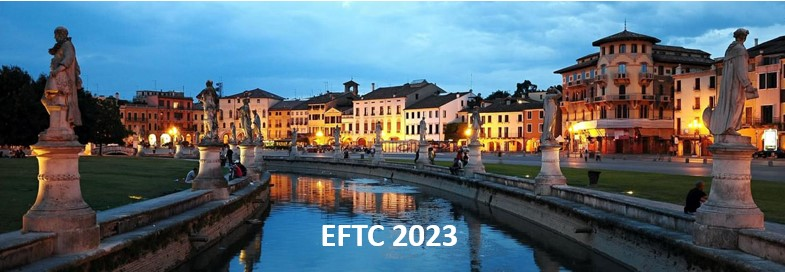Speaker
Description
The geodesic-acoustic-mode (GAM) is a plasma oscillation observed in fusion reactors with toroidal geometry (such as the Tokamak or Stellarator) and are recognized to be the non-stationary branch of the zonal flows (ZFs). Similarly to the ZFs, GAMs are understood to regulate cross-field turbulence and thus enhance energy confinement [1]. Still, their direct effect on turbulence is not yet fully understood [2], as GAMs are known to deplete the energy available to ZFs [3]. This complex contribution to the turbulence dynamics makes GAMs highly interesting in current fusion research.
The nonlinear Schrödinger equation (NLSE) model [4] for the isolated, undamped GAM predicts the susceptibility of GAM packets to the modulational instability (MI). The necessary conditions for this instability are analyzed analytically and numerically using the NLSE model. The predictions of the NLSE are compared to gyrokinetic simulations performed with the global particle-in-cell code ORB5, where the GAM packets are created from initial perturbations of the axisymmetric radial electric field $E_r$. An instability of the GAM packets with respect to modulations is observed, in both cases in which an initial perturbation is imposed and when the instability develops spontaneously. However, significant differences in the dynamics of the small scales are discerned between the NLSE and gyrokinetic simulations. These discrepancies are mainly due to the radial dependence of the strength of the nonlinear term and to the damping of higher spectral components, which we do not retain in the NLSE. The influence of the safety factor $q_s$, the ion Larmor radius $\rho_i$ as well as the perturbation wavenumber $k_\text{pert}$ on this effect is studied. The damping of the high-$k_r$ components can be understood in terms of Landau damping.
[1] G. D. Conway, A. I. Smolyakov, and T. Ido, Nuclear Fusion 62, 013001 (2021)
[2] A. I. Smolyakov, M. F. Bashir, A. G. Efimov, M. Yagi and N. Miyato, Plasma Physics Reports 42, 407 (2016)
[3] B. D. Scott, New Journal of Physics 7, 92 (2005)
[4] E. Poli, A. Bottino, O. Maj, F. Palermo, and H. Weber, Physics of Plasmas 28, 112505 (2021)

